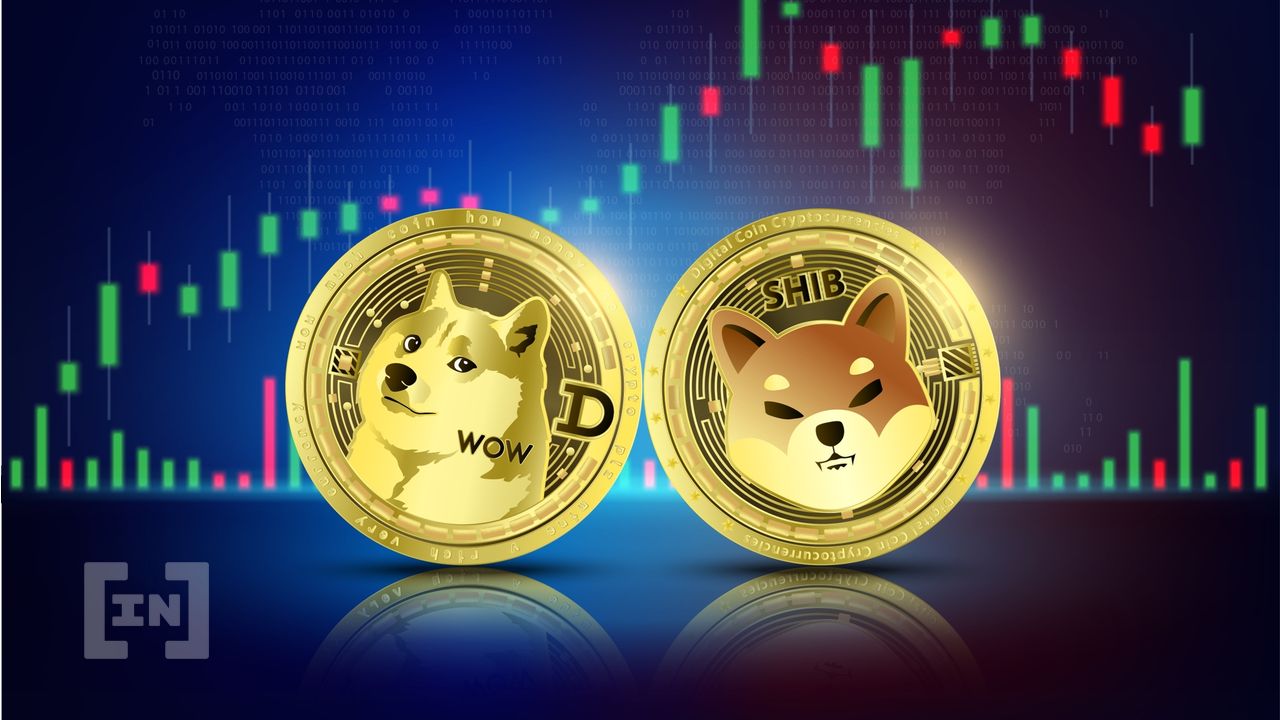Meme coins are exactly what the name suggests: cryptocurrencies based on internet memes. These volatile assets often offer the allure of quick profits but they are highly speculative and carry significant risks for investors. While some, like Dogecoin, outgrow their initial hype and build strong communities, their long-term stability remains uncertain. This guide covers everything you need to know about meme coins in 2024.
KEY TAKEAWAYS
➤ Meme coins are cryptocurrencies created mostly as jokes, with value driven by community hype.
➤ Meme coins that outgrow their initial hype, like Dogecoin, can become more established and widely used.
➤ Popular meme coins include Dogecoin, Shiba Inu, PEPE, FLOKI, and other similar assets.
➤ Investing in meme coins is highly speculative and risky, so it’s best to invest cautiously and responsibly.
What are meme coins?
Meme coins are cryptocurrencies that were essentially created as a joke. That was certainly the inspiration for the creation of Dogecoin. Following Dogecoin’s success, many copycat coins, particularly dog-themed, have emerged.
The motive for creating these copycat meme coins often revolves around generating initial hype and FOMO that could trigger sharp early price spikes.
Subsequently, while these coins can sometimes start as jokes, the focus is frequently on capitalizing on short-term speculative gains (rather than building long-term value).
Some meme coins run on their own blockchains, powered by their own decentralized network of computers. Others run as tokens on top of other blockchains, such as ERC-20 tokens on the Ethereum network.
The original meme coin: Dogecoin (DOGE)
The first meme coin ever created was Dogecoin. Software developers Billy Markus and Jackson Palmer launched Dogecoin’s mainnet in 2013 as a fork of Litecoin.
Markus initially devised the idea, getting his inspiration from a popular internet Shiba Inu meme. Palmer later helped Markus turn his idea into a workable cryptocurrency.
At the end of 2013, Dogecoin was trading on cryptocurrency exchanges in the $0.0003–7 region. In early 2014, it surpassed $0.001 for the first time.
It took more than four years for Dogecoin to surpass $0.01 for the first time in mid-2018. Then, in May 2021, it briefly reached around $0.74 per coin. That represented a more than 1000x return versus its early 2014 levels.
As of Sept. 05, 2024, Dogecoin is the eighth-largest cryptocurrency with a market cap exceeding $14 billion.
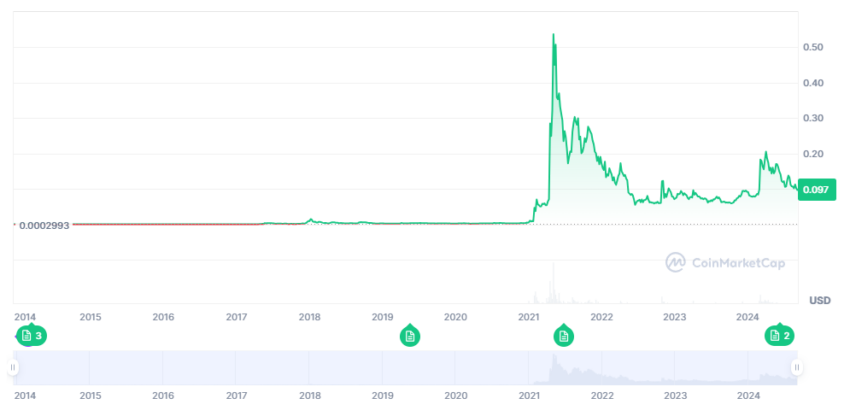
What makes meme coins so popular?
There is no definitive answer to this question. Different investors take an interest in meme coins for different reasons.
Many investors find meme coins attractive due to the potential for rapid gains. Popular meme coins like Dogecoin (DOGE) and Shiba Inu (SHIB) have a well-documented history of undergoing rapid, exponential price gains.
Others enjoy the fact that meme coins represent crypto’s light-hearted side. Many might be a fan of the specific meme, dog, or another animal that the meme coin was inspired by. For these investors, the meme coin might serve as more of a collector’s item.
What are the risks of investing in meme coins?
Some of the most common risks associated with meme coins include:
Volatility
Meme coins are generally viewed as lacking in utility when compared to major cryptocurrencies such as Bitcoin and Ethereum. Their utility mainly comes from the fact that they function as a collectors’ item. According to critics, this means they have no, or at least very little, fundamental value.
As a result, meme coin prices often rise and fall with the emotions of their communities and the broader retail market.
Adding to this volatility is the fact that meme coin distribution tends to be highly unequal. A few investors tend to hold a substantial market share, which gives them an outsized ability to affect the market.
Prices can surge amid a sudden surge in Fear Of Missing Out (FOMO). Something as simple as a celebrity endorsement can trigger FOMO.
For instance, in early 2021, billionaire Elon Musk frequently touted his support for Dogecoin. This helped pump the cryptocurrency as much as 20,000% over the year.
Just as quickly as FOMO can boost prices, panic selling can trigger a crash.
Meme coin investors who buy during peak FOMO often lose money once the initial hype fades.
Furthermore, popular meme coins can impact each other’s prices. For example, one coin may crash in price as investors flock to the new fashionable meme coin.
Rug pulls
Meme coin investors also risk falling foul of rug-pull scams. A high-profile example was the Squid Game meme coin, which at the time piggybacked off of the popularity of a Netflix show by the same name.
After surging in price, and after the creators of SQUID cashed out on their tokens, Squid’s development team suddenly pulled the rug on their “project” and disappeared. SQUID tokens lost nearly all of their value immediately. Holders were even blocked from being able to sell.
How to buy meme coins
Meme coins are easy to buy on most major cryptocurrency exchanges. The process only takes a few steps on simple-to-use platforms such as OKX.
Here is a quick demonstration of how to quickly buy Dogecoin via OKX:
1. Create an OKX account using your email and phone number. You may have to go through the KYC process, so keep your government-issued ID card and address proof handy.

2. Once you have set up and verified your OKX account, log into the platform. Make sure to click on the “Exchange” tab in the top left. Now hover over the “Buy crypto” tab at the top of the page. You then want to press “Buy with card”.
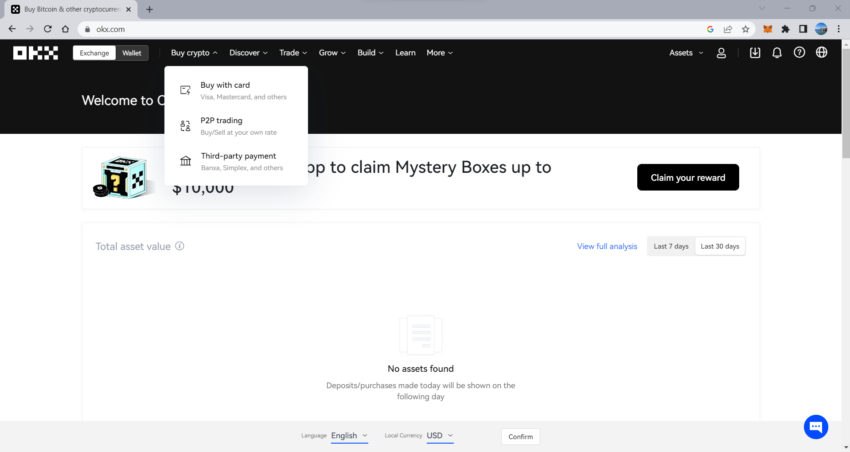
3. You will now be directed to a page where you can enter the amount of cryptocurrency you want to buy and what fiat currency you want to buy it with.
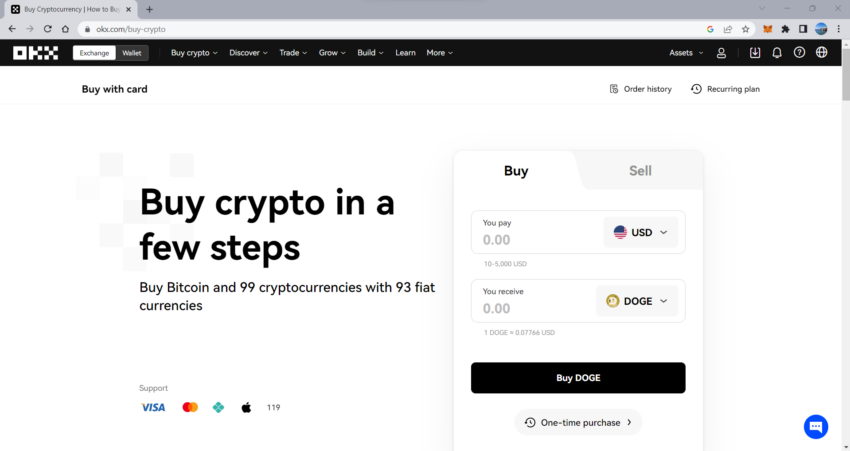
4. After selecting the fiat currency you wish to pay in, enter the amount of crypto you want to buy.
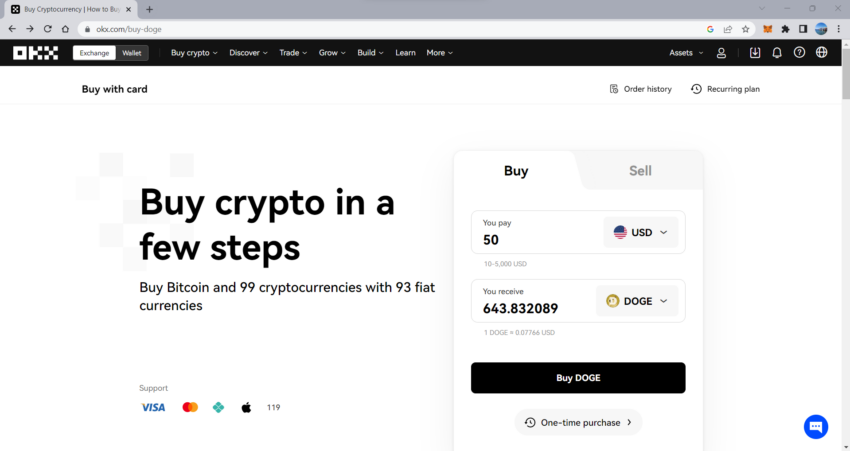
5. You will now be directed to a page that allows you to choose your preferred payment method.
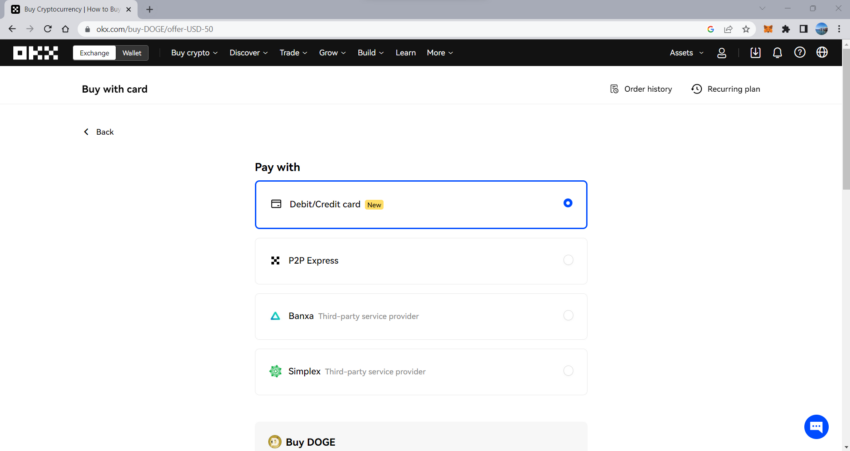
6. Scroll down to see a preview of the exchange rate you will receive. Hit “Pay” to buy. If you have not yet entered your card details or completed certain KYC requirements, this is where you will be prompted to do so.
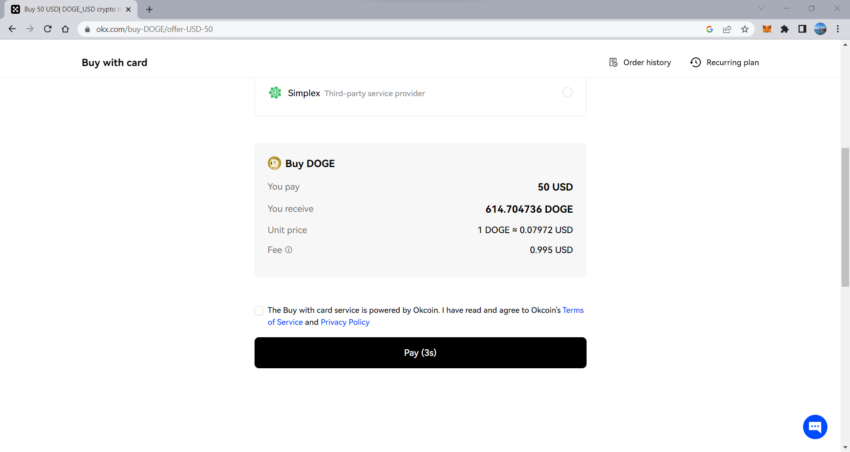
Best meme coins in December 2024
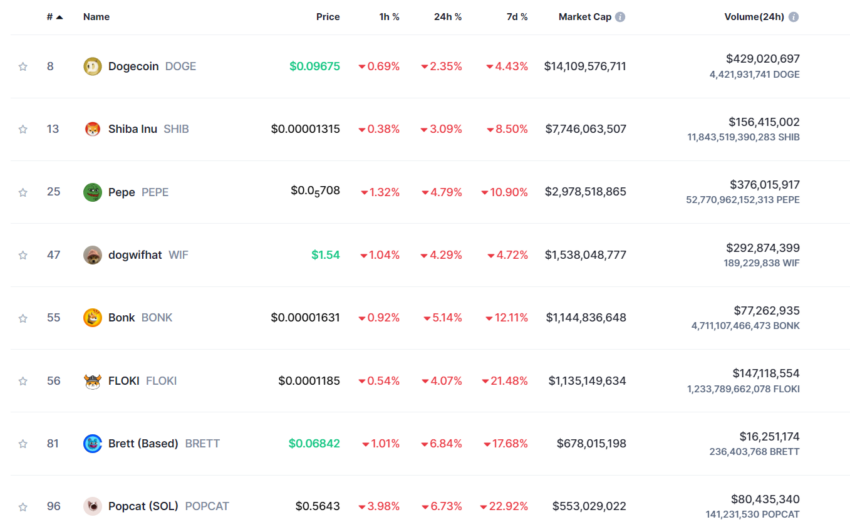
Here are some of the most popular meme coins in the market in no particular order:
1. DOGE
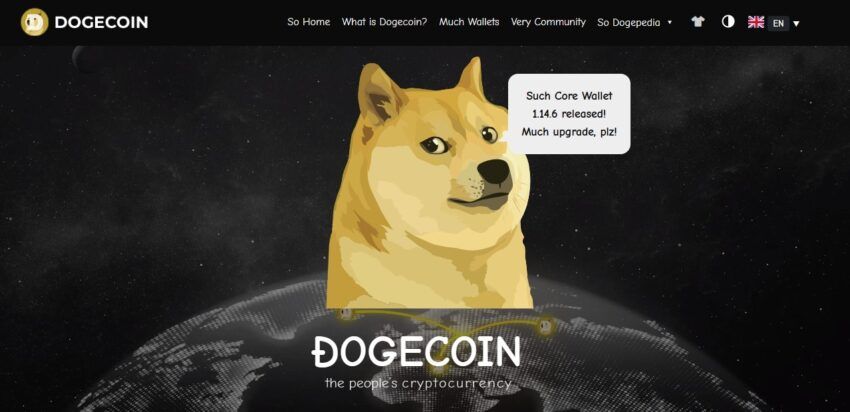
Dogecoin is a cryptocurrency that was created in 2013 as a light-hearted and meme-inspired digital currency. It takes its name from the popular “Doge” internet meme featuring a Shiba Inu dog. Dogecoin is a Luckycoin fork, which is a Litecoin fork (which is a fork of Bitcoin).
Over the years, Dogecoin has gained a significant following and has been used for various charitable causes and tipping content creators online. Its community is often referred to as the “Doge Army.”
Dogecoin’s value and popularity have experienced fluctuations in the cryptocurrency market, influenced by factors such as social media trends and celebrity endorsements.
It’s important to note that while Dogecoin began as a playful and satirical cryptocurrency, it has gained recognition and utility beyond its initial intentions.
2. SHIB
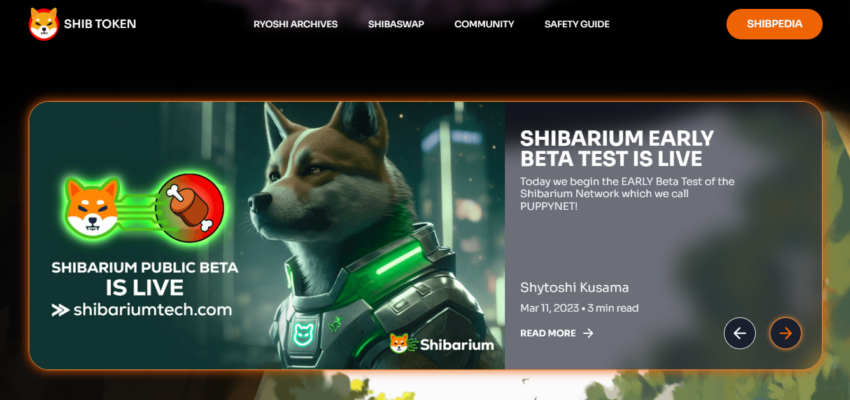
Shiba Inu Token is a cryptocurrency that was introduced in August 2020. It takes its name from the Shiba Inu breed of dog, which gained popularity as an internet meme.
Shiba Inu Token, often referred to as SHIB, aims to capitalize on the meme culture and community-driven nature of cryptocurrencies.
SHIB is built on the Ethereum blockchain and is considered an ERC-20 token. It was created to provide a decentralized alternative to other cryptocurrencies and establish a vibrant community of holders.
The token’s logo features the likeness of a Shiba Inu dog, which has become synonymous with the token’s identity. One of the notable aspects of Shiba Inu Token is its supply, as trillions of tokens were initially minted.
3. PEPE
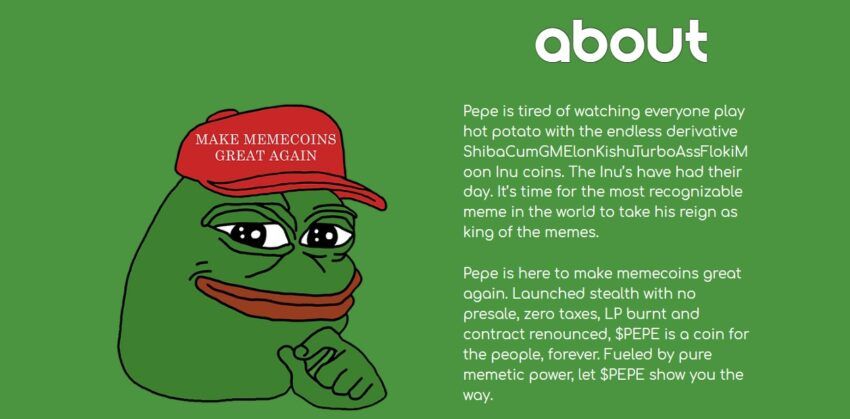
Launched in mid-April 2023, the PEPE meme coin emerges as an embodiment of memability. It distinguishes itself as a meme coin with no inherent value or financial prospects.
Operating without a formal team or roadmap, PEPE serves purely as an entertainment-driven asset. While inspired by the beloved Pepe meme, the creators make it clear that the PEPE token has no affiliation with Matt Furie or his creation, Pepe the frog.
Pepe the Frog is a beloved cartoon character brought to life by cartoonist Matt Furie. Making its debut in 2005 in Furie’s comic series called Boy’s Club, Pepe quickly captured the hearts of readers and gained recognition as an iconic character.
4. FLOKI
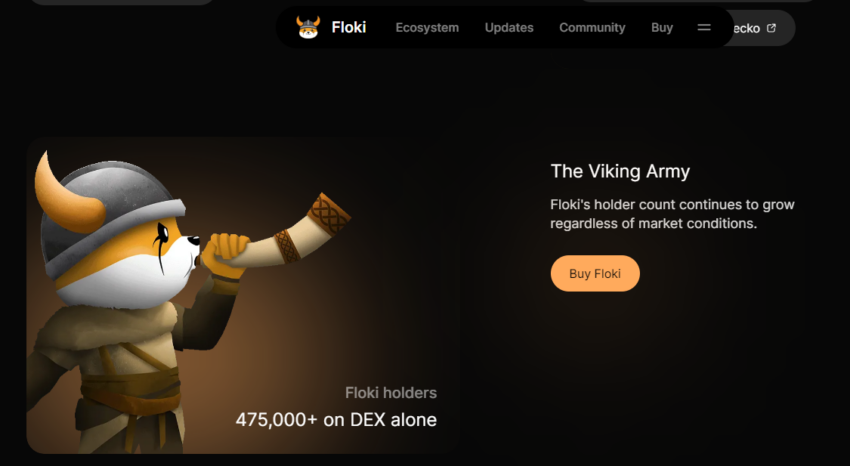
Originating as a meme-coin inspired by Elon Musk’s dog, FLOKI has since transformed into a comprehensive web3 project encompassing decentralized finance, non-fungible tokens (NFTs), the metaverse, and philanthropy.
Positioned as the “People’s Crypto,” Floki has set ambitious goals, including the establishment of schools on every continent, with a particular focus on underdeveloped regions.
Operating on both the Ethereum and Binance Smart Chain (BSC) blockchains, FLOKI is a multi-chain token. It implements a built-in 3% tax mechanism that is applied to both token purchases and sales, ensuring ongoing support for the project’s initiatives.
Should you invest in meme coins?
For professional/serious investors and traders, trading meme coins offers the potential for rapid gains. That is also the case for casual/retail investors. But meme coin prices move rapidly. This complicates things for investors who don’t always watch markets. For this reason, casual investors likely face a higher risk of incurring substantial losses on their meme coin investments.
When it comes down to it, whether to invest in meme coins is up to the individual. If an investor is happy to own an asset that can fluctuate by orders of magnitude in a matter of days, all power to them.
One piece of sound advice that most retail/casual investors are advised to follow, however, is not to invest more money in meme coins than they can afford to lose.
Ploughing one’s life savings into the latest trending meme coin could make a person rich, but could just as easily end in disaster and leave a person broke.
Will meme coins continue to flourish?
Meme coins have risen to prominence in the past few years, all riding on the back of Dogecoin. Now, the focus is on increasing the utility of the tokens, with many projects switching to games and technical developments to boost usage. The market will likely see many more meme coins going forward.
However, as it stands, the ones mentioned in this list are dominating the niche and are expanding with more features. While crypto is a volatile asset class, meme coins are even more difficult to predict. Prioritize safety and security and watch out for scams at all times.
Frequently asked questions
How do I buy meme coins?
What are meme coins?
How to find new meme coins?
Where to buy meme coins?
Which meme coin is the best?
Is a meme coin a good investment?
How much is a meme coin worth?
Disclaimer
In line with the Trust Project guidelines, the educational content on this website is offered in good faith and for general information purposes only. BeInCrypto prioritizes providing high-quality information, taking the time to research and create informative content for readers. While partners may reward the company with commissions for placements in articles, these commissions do not influence the unbiased, honest, and helpful content creation process. Any action taken by the reader based on this information is strictly at their own risk. Please note that our Terms and Conditions, Privacy Policy, and Disclaimers have been updated.


